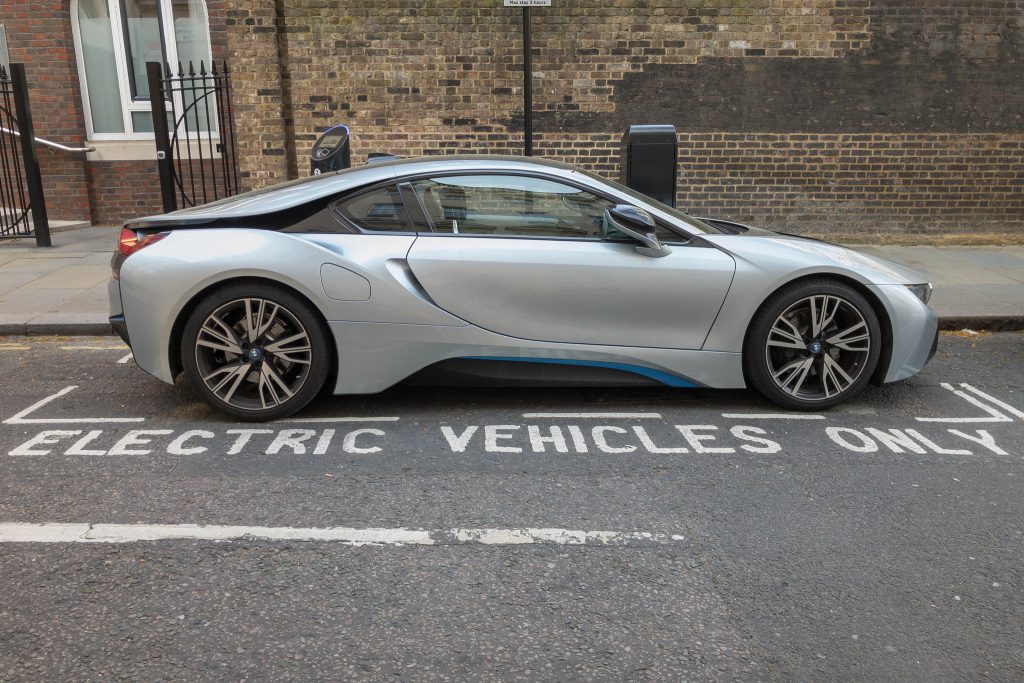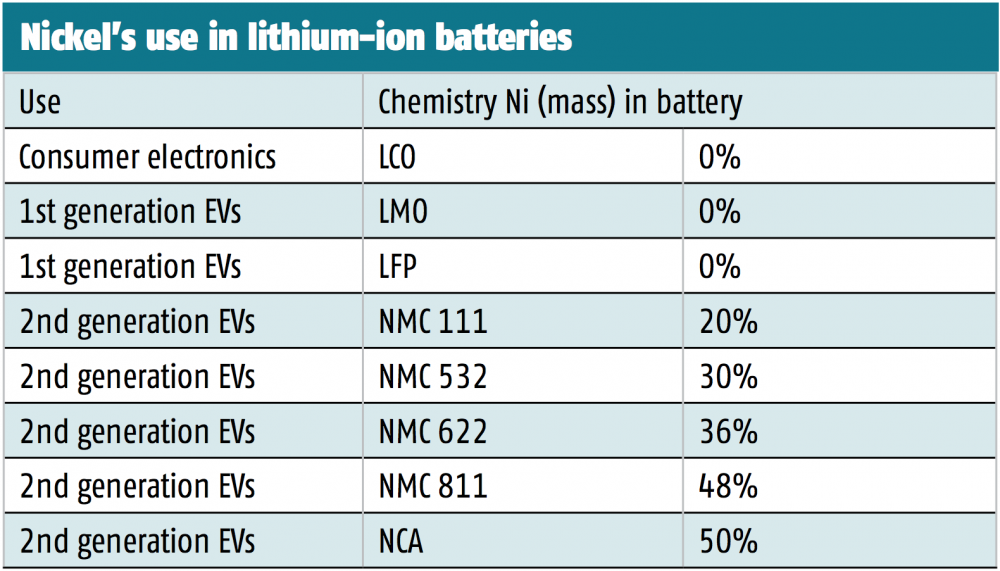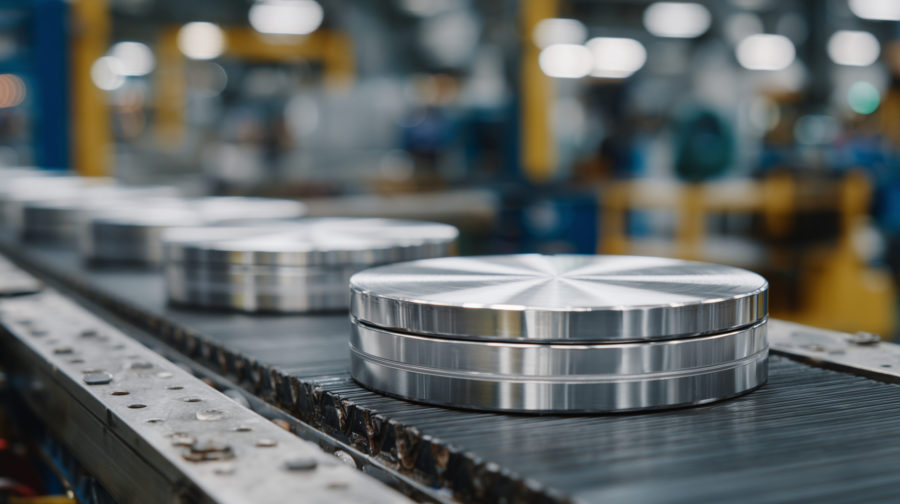Don’t underestimate lithium-ion battery demand for nickel

The focus on lithium-ion batteries seems to reflect supply and demand of lithium and cobalt and the growth rates of EVs and ESS but it would be very wrong not to include nickel. If EVs are to replace petrol/diesel vehicles, they will require battery packs that can deliver the ranges that drivers are used to.
First-generation EVs relied on lithium-ion batteries that were made using lithium iron phosphate (LFP) and lithium manganese oxide (LMO), neither of which used nickel in their chemistries. Since range anxiety has been a factor putting people off buying EVs, the industry has developed batteries that have higher energy densities and therefore greater ranges. These second-generation lithium-ion batteries have a different chemistry, one that use nickel manganese and cobalt (NMC).
China announced earlier this year changes to its subsidies for EVs; these were aimed at EVs that have greater ranges, which encouraged the use of NMC batteries over LFP and LMO. Although all battery chemistries are still used, new models are likely to be designed around NMC chemistries as and when they are developed. As well as NMC, Tesla uses its own lithium-ion battery, which has yet another chemistry – nickel, cobalt and aluminium (NCA).
Quadruple-positive whammy for nickel demand
Given the need for greater range, we expect most EVs will ultimately use NMC and NCA batteries so more nickel will now be used in EV battery cells. But as well as more EVs now having nickel in the battery cells, two other factors look set to increase the amount of nickel in EVs.
First, the strive to increase energy density in batteries and the need to reduce cobalt in the batteries, because it is in short supply and is therefore expensive, means newer and better NMC batteries are being introduced. These all increase the amount of nickel and decrease the amount of cobalt. Higher nickel content increases energy density while less cobalt reduces the price. The table below shows how nickel in battery cells is set to increase. Cobalt is still a vital ingredient in lithium-ion batteries because it helps keep the battery chemistry stable.

Second, another way to increase the range of an EV is to install a bigger battery so EVs are now expected to be designed with bigger battery packs.
The four factors that will lead to exponential demand growth in nickel are therefore:
1) EVs themselves are seeing exponential growth
2) The switch to NMC and NCA batteries mean battery cells now contain nickel, whereas first generation batteries did not
3) There will be increasing amounts of nickel going into each battery cell
4) EV battery packs
Story originally appeared in Metal Bulletin
More News
{{ commodity.name }}
{{ post.title }}
{{ post.date }}




Comments